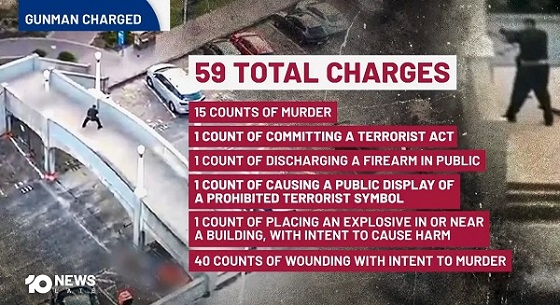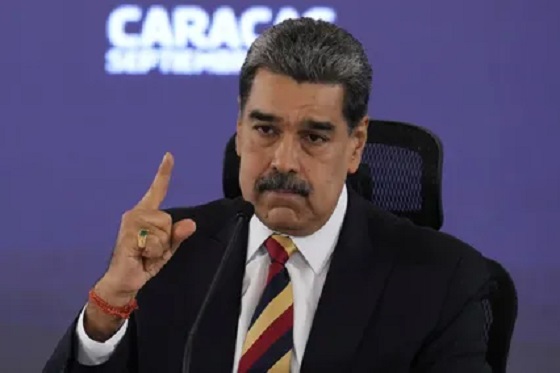Business
Trump’s dismantling of USAID is his biggest blow against the Deep State yet

From LifeSiteNews
By Frank Wright
Elon Musk’s DOGE has shut down USAID, immediately ceasing U.S. government funding of NGOs backing digital tyranny, mass migration, the ‘LGBTQ’ agenda, abortion – and a host of ‘regime change’ operations.
Donald Trump’s new administration has begun to dismantle globalist network funding of the policies of social revolution across the West – and beyond. With the revelations on the shuttering of USAID, Americans now know whose money is behind the Deep State: theirs.
Trump’s war on the Deep State has shocked the establishment. Elon Musk’s DOGE has shut down USAID, immediately ceasing U.S. government funding of NGOs backing digital tyranny, mass migration, the “LGBTQ” agenda, abortion – and a host of “regime change” operations including the funding of the origins of COVID-19 and the impeachment of Donald Trump himself.
These projects, and many more, were all paid for with U.S. taxpayer’s money through USAID.
This Deep State network of finance, influence and the subversion of democracy in the U.S., Britain, Europe and beyond remained unchanged in every election – until this one.
USAID, The U.S. Agency for International Development, “disbursed over 72 billion dollars last year,” according to a Newsweek report in October 2024, which described the now-defunct agency as “by far the world’s largest provider of humanitarian aid.”
So where is this “aid” going?
… and what sort of “humanitarian” projects has it been aiding?
“USAID is notorious for funding the most horrifying projects known to mankind,” as Mike Benz explains.
These projects include apparently funding the origins of COVID-19, “fake social media sites” to promote the overthrow of governments, heroin production and “fake HIV clinics” to promote regime change – as well as funding the prosecution of Americans, and U.S. election interference.
“USAID IS NOTORIOUS FOR FUNDING THE DARKEST, MOST HORRIFYING PROJECTS KNOWN TO MANKIND.” @MikeBenzCyber was shocked to learn about USAID’s role in taking down free speech in America. @AmandaHead @jsolomonReports pic.twitter.com/jWB8FlGoN8
— Real America's Voice (RAV) (@RealAmVoice) February 3, 2025
USAID’s “humanitarian” work included funding and directing the template for global digital governance in Ukraine, with its DIIA app, and funding the World Economic Forum which promotes the same agenda:
🚨🇺🇸 “I found out that USAid has been giving money to support the World Economic Forum”
“Why is the American Tax Payer funding The WEF when everyone that arrives there lands in a private jet” ‼️ pic.twitter.com/OHOdYHIbaL
— Concerned Citizen (@BGatesIsaPyscho) February 4, 2025
Its humanitarian efforts extended to sponsoring anti-Catholic propaganda in Ireland:
As Glenn Beck has pointed out, USAID was a major sponsor of abortion:
USAID is not a "humanitarian" effort. It's a CIA front. It's why the rest of the world HATES us.
In exchange for our tax dollars, we've asked countries to change their laws, accept abortion, promote transgenderism in their schools, open their markets to multinational… pic.twitter.com/eMhLyVhhTi
— Glenn Beck (@glennbeck) February 3, 2025
Here is a picture of ISIS terrorists in Syria in a USAID tent:

USAID was also funding “globalist propaganda” on the U.K.’s state broadcaster:
🚨 BBC FUNDED BY USAID – YOUR TAX DOLLARS FUELING GLOBALIST PROPAGANDA! 🚨
Not content with squeezing Brits dry through a ridiculous TV licence fee, the BBC has ALSO been dipping its hands into U.S. taxpayer money via USAID.
🔴 Hardworking Americans & Brits unknowingly funding… pic.twitter.com/3NQdAFViUC
— Jim Ferguson (@JimFergusonUK) February 4, 2025
Independent journalist Michael Shellenberger reported, “From 2004-2022, USAID was the largest U.S. government funder of EcoHealth Alliance, the group that funded the Wuhan Institute of Virology (WIV), which likely started the COVID pandemic.”
USAID sought to undermine and overthrow traditional and conservative national governments in Eastern Europe – and replace them with liberal-globalist ones:
Dmitry Arestovich, the former right-hand man to Ukraine’s Volodymyr Zelensky, now says USAID pressured the Ukrainian President into the war:
USAID funded “sterilization projects” in Peru:
And as LifeSiteNews reported in December 2024, USAID pressured African nations to change pro-life laws and promote mass abortions, but that did not stop Fr. James Martin from bewailing its demise.
USAID also paid “race rioters” to engage in violent protests in Africa:
At home, USAID sponsored the prosecution of U.S. citizens by “Soros-funded prosecutors”:
…and, as former Trump State Department staffer Mike Benz also asks, “Why did USAID pay $20 million to hit piece journalists to dig up dirt on Rudy Giuliani and use that dirt as the basis to impeach the sitting U.S. President in 2019?”
USAID was also giving “millions of dollars to Bill Kristol,” arch-neocon and founder of the permanent war “Project for a New American Century.”
The populist leader of El Salvador Nayib Bukele summed up the happy ending for the world that is the end of USAID.
“Most governments don’t want USAID funds flowing into their countries because they understand where much of that money actually ends up. While marketed as support for development, democracy, and human rights, the majority of these funds are funneled into opposition groups, NGOs with political agendas, and destabilizing movements.”
He explained how only “maybe 10% of the money reaches real projects that help people in need,” adding that “there are such cases” – but the remaining ninety percent, he says, “It is used to fuel dissent, finance protests, and undermine administrations that refuse to align with the globalist agenda. Cutting this so-called aid isn’t just beneficial for the United States; it’s also a big win for the rest of the world.”
Donald Trump’s war on the Deep State has just begun. It is not merely concerned with saving America, but his “common sense revolution” is a cure for a world made sick by a global network of death, deception and digital tyranny. He is uprooting the hidden international system which has promoted “LGBT, open borders and war” – as Hungary’s Viktor Orbán defined the values of the former regime.
This has been described as a “counter-revolution” by Archbishop Carlo Maria Viganò, who says these are serious moves against the “Deep State… and its mirror image, the Deep Church.”
With a serious campaign underway to destroy the business model of the globalist system it is hard to see how the rainbow “church” of Fr. James Martin can survive its isolation in a world without the patronage, propaganda and power of a corrupt Deep State and its globalist networks.
And the revolution does not stop with USAID. With moves to “purge” the FBI, audit the U.S. Treasury and all the agencies of the U.S. government, Musk’s Department of Government Efficiency is set to undertake a thorough cleanup of the White House and all it commands.
You might say the swamp is being drained.
However you frame it, what is happening here has never been seen in our lifetimes.
The secret state which directed politics and policy in the West despite elections is being exposed, defunded and shut down. We may not only have meaningful elections in future, but a Western society free of the propaganda of social revolution whose toxic “new values” had one thing in mind: the replacement of Christian civilization with a global government no one could ever escape.
Finally, after decades of destruction by design, things have really changed. For good.
Agriculture
Why is Canada paying for dairy ‘losses’ during a boom?

This article supplied by Troy Media.
Canadians are told dairy farmers need protection. The newest numbers tell a different story
Every once in a while, someone inside a tightly protected system decides to say the quiet part out loud. That is what Joel Fox, a dairy farmer from the Trenton, Ont., area, did recently in the Ontario Farmer newspaper.
In a candid open letter, Fox questioned why established dairy farmers like himself continue to receive increasingly large government payouts, even though the sector is not shrinking but expanding. For readers less familiar with the system, supply management is the federal framework that controls dairy production through quotas and sets minimum prices to stabilize farmer income.
His piece, titled “We continue to privatize gains, socialize losses,” did not come from an economist or a critic of supply management. It came from someone who benefits from it. Yet his message was unmistakable: the numbers no longer add up.
Fox’s letter marks something we have not seen in years, a rare moment of internal dissent from a system that usually speaks with one voice. It is the first meaningful crack since the viral milk-dumping video by Ontario dairy farmer Jerry Huigen, who filmed himself being forced to dump thousands of litres of perfectly good milk because of quota rules. Huigen’s video exposed contradictions inside supply management, but the system quickly closed ranks until now. Fox has reopened a conversation that has been dormant for far too long.
In his letter, Fox admitted he would cash his latest $14,000 Dairy Direct Payment Program cheque, despite believing the program wastes taxpayer money. The Dairy Direct Payment Program was created to offset supposed losses from trade agreements like the Comprehensive Economic and Trade Agreement (CETA), the Comprehensive and Progressive Agreement for Trans-Pacific Partnership (CPTPP) and the Canada–United States–Mexico Agreement (CUSMA).
During those negotiations, Ottawa promised compensation because the agreements opened a small share of Canada’s dairy market, roughly three to five per cent, to additional foreign imports. The expectation was that this would shrink the domestic market. But those “losses” were only projections based on modelling and assumptions about future erosion in market share. They were predictions, not actual declines in production or demand. In reality, domestic dairy demand has strengthened.
Which raises the obvious question: why are we compensating dairy farmers for producing less when they are, in fact, producing more?
This month, dairy farmers received another one per cent quota increase, on top of several increases totalling four to five per cent in recent years. Quota only goes up when more milk is needed.
If trade deals had actually harmed the sector, quota would be going down, not up. Instead, Canada’s population has grown by nearly six million since 2015, processors have expanded and consumption has held steady. The market is clearly expanding.
Understanding what quota is makes the contradiction clearer. Quota is a government-created financial asset worth $24,000 to $27,000 per kilogram of butterfat. A mid-sized dairy farm may hold about $2.5 million in quota. Over the past few years, cumulative quota increases of five per cent or more have automatically added $120,000 to $135,000 to the value of a typical farm’s quota, entirely free.
Larger farms see even greater windfalls. Across the entire dairy system, these increases represent hundreds of millions of dollars in newly created quota value, likely exceeding $500 million in added wealth, generated not through innovation or productivity but by a regulatory decision.
That wealth is not just theoretical. Farm Credit Canada, a federal Crown corporation, accepts quota as collateral. When quota increases, so does a farmer’s borrowing power. Taxpayers indirectly backstop the loans tied to this government-manufactured asset. The upside flows privately; the risk sits with the public.
Yet despite rising production, rising quota values, rising equity and rising borrowing capacity, Ottawa continues issuing billions in compensation. Between 2019 and 2028, nearly $3 billion will flow to dairy farmers through the Dairy Direct Payment Program. Payments are based on quota holdings, meaning the largest farms receive the largest cheques. New farmers, young farmers and those without quota receive nothing. Established farms collect compensation while their asset values grow.
The rationale for these payments has collapsed. The domestic market did not shrink. Quota did not contract. Production did not fall. The compensation continues only because political promises are easier to maintain than to revisit.
What makes Fox’s letter important is that it comes from someone who gains from the system. When insiders publicly admit the compensation makes no economic sense, policymakers can no longer hide behind familiar scripts. Fox ends his letter with blunt honesty: “These privatized gains and socialized losses may not be good for Canadian taxpayers … but they sure are good for me.”
Canada is not being asked to abandon its dairy sector. It is being asked to face reality. If farmers are producing more, taxpayers should not be compensating them for imaginary declines. If quota values keep rising, Ottawa should not be writing billion-dollar cheques for hypothetical losses.
Fox’s letter is not a complaint; it is an opportunity. If insiders are calling for honesty, policymakers should finally be willing to do the same.
Dr. Sylvain Charlebois is a Canadian professor and researcher in food distribution and policy. He is senior director of the Agri-Food Analytics Lab at Dalhousie University and co-host of The Food Professor Podcast. He is frequently cited in the media for his insights on food prices, agricultural trends, and the global food supply chain.
Troy Media empowers Canadian community news outlets by providing independent, insightful analysis and commentary. Our mission is to support local media in helping Canadians stay informed and engaged by delivering reliable content that strengthens community connections and deepens understanding across the country.
Agriculture
Canadians should thank Trump for targeting supply management

This article supplied by Troy Media.
 By Gwyn Morgan
By Gwyn Morgan
Trump is forcing the Canadian government to confront what it has long avoided: an end to supply management
U.S. President Donald Trump’s deeply harmful tariff rampage has put the Canada-U.S.-Mexico Agreement (CUSMA) under renewed strain. At the centre of that uncertainty is Canada’s supply management system, an economically costly and politically protected regime Ottawa has long refused to reform.
Supply management uses quotas and fixed prices for milk, eggs and poultry with the intention of matching supply with demand while restricting imports. Producers need quota in order to produce and sell output legally. Given the thousands of farmers spread across the country, combined with the fact that the quotas are specific to milk, eggs, chickens and turkey, the bureaucracy (and number of bureaucrats) required is huge and extremely costly. Department of Agriculture and Agri-Food 2024-25 transfer payments included $4.8 billion for “Supply Management Initiatives.”
The bureaucrats often get it wrong. Canada’s most recent chicken production cycle saw one of the worst supply shortfalls in more than 50 years. Preset quota limits stopped farmers from responding to meet demand, leaving consumers with higher grocery bills for 11th-hour imports. The reality is that accurately predicting demand is impossible.
The dysfunction doesn’t stop with chicken. Egg imports under the shortage allocation program had already topped 14 million dozen by mid-year. Our trading partners are taking full advantage. Chile, for example, is on track to double chicken exports.
The cost to consumers is considerable. Pre-pandemic research estimates the average Canadian family pays $300 to $444 extra for food as a result of supply management. And since, as a share of their income, lower-income Canadians spend three times as much as middle-income Canadians and almost five times as much as upper-income Canadians, the impact on them is proportionally much greater.
It’s no surprise that farmers are anxious to protect their monopoly. In most cases, they have paid hefty sums for their quota. If the price of their product were allowed to fall to free-market levels, the value of their quota would go to zero. In addition, the Dairy Farmers of Canada argue that supply management means “the right amount of food is produced,” producers get a “fair return,” and import restrictions guarantee access to “homegrown food,” all of which is debatable.
All price-fixing systems create problems. Dairy cattle are not machines. A cow’s milk production varies. If a farmer gets more milk than his quota, the excess must be dumped. When governments limit the supply of any item, its value always rises. Dairy quotas, by their very nature, have become a valuable commodity, selling for more than $25,000 per “cow equivalent.” That means a 100-head dairy farm is worth at least $2,500,000 in quota alone, a value that exists only because of the legislated ability to charge higher-than-market prices.
Dairy isn’t the only sector where government-regulated quotas have become very valuable. The West Coast fishery is another. Commercial fishery quotas for salmon and halibut have become valuable commodities worth millions of dollars, completely out of reach for independent fishers, turning them into de facto employees of quota holders.
While of relatively limited national importance, supply management is of major political significance in Quebec. As George Mason University and Montreal Economic Institute economist Vincent Geloso notes, “In 17 ridings provincially, people under supply management are strong enough to change the outcome of the election.”
That brings us back to the upcoming CUSMA negotiations. Under CUSMA, the U.S. gets less than five per cent of Canada’s agricultural products market. Given that President Trump has been a long-standing critic of supply management, especially in dairy, it’s certain to be targeted.
Looking to pre-empt concessions, supply-managed farmer associations lobbied the federal government to pass legislation keeping supply management off the table in any future trade negotiations. This makes voters in those 17 Quebec ridings happy, but it’s certain to enrage Trump, starting the CUSMA negotiations off on a decidedly adversarial note. As Concordia University economist Moshe Lander says: “The government seems willing even to accept tariffs and damage to the Canadian economy rather than put dairy supply management on the table.”
Parliament can pass whatever laws it likes, but Trump has made it clear that ending supply management, especially in dairy, is one of his main goals in the CUSMA review. It’s hard to see how a deal can be made without substantial reform. That will make life difficult for the federal Liberals. But the president will be doing Canadian consumers a big favour.
Gwyn Morgan is a retired business leader who has been a director of five global corporations.
Troy Media empowers Canadian community news outlets by providing independent, insightful analysis and commentary. Our mission is to support local media in helping Canadians stay informed and engaged by delivering reliable content that strengthens community connections and deepens understanding across the country.
-

 Alberta1 day ago
Alberta1 day agoDanielle Smith slams Skate Canada for stopping events in Alberta over ban on men in women’s sports
-

 Health2 days ago
Health2 days agoSaskatchewan woman approved for euthanasia urged to seek medical help in Canada rather than US
-

 Indigenous2 days ago
Indigenous2 days agoResidential school burials controversy continues to fuel wave of church arsons, new data suggests
-

 International2 days ago
International2 days agoFBI didn’t think it had cause to raid Trump but DOJ did it anyway
-

 Health2 days ago
Health2 days agoCanadian gov’t considers sharing census data on gender-confused children
-

 Crime1 day ago
Crime1 day agoThe Uncomfortable Demographics of Islamist Bloodshed—and Why “Islamophobia” Deflection Increases the Threat
-

 International17 hours ago
International17 hours agoTOTAL AND COMPLETE BLOCKADE: Trump cuts off Venezuela’s oil lifeline
-

 Energy1 day ago
Energy1 day agoLiberals Twisted Themselves Into Pretzels Over Their Own Pipeline MOU




